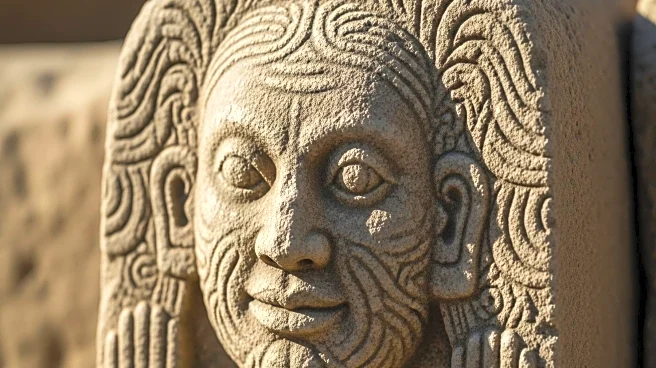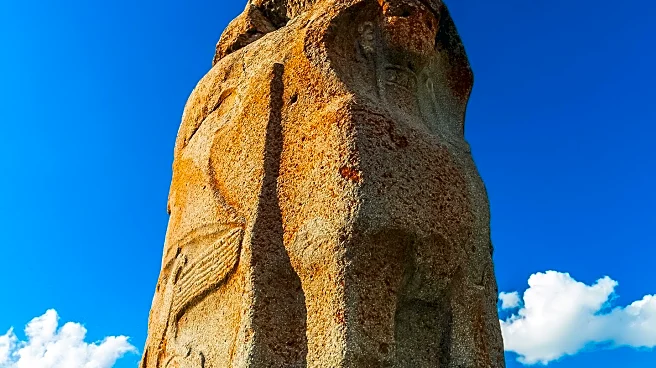What is the story about?
What's Happening?
Archaeologists have unearthed an 11,000-year-old pillar carved with a human face at the Neolithic site of Karahan Tepe in southeast Turkey. The discovery, led by Necmi Karul of Istanbul University, features a face with a prominent nose, deep-set eyes, and a sharp jawline. This is the first instance of a human face being found on a T-shaped pillar, a type of monolith prevalent in the prehistoric sanctuaries known as Taş Tepeler, which includes the World Heritage site Göbekli Tepe. The carved face supports the interpretation of T-shaped pillars as symbolic renderings of the human form, rather than mere architectural features. Excavations at Karahan Tepe began in 2019, revealing numerous anthropomorphic pillars with anatomically proportionate features, such as arms, hands, and garments.
Why It's Important?
This discovery is significant as it challenges the traditional view that complex spiritual life emerged only after the advent of agriculture. Karahan Tepe, built nearly 2,000 years before widespread farming, served as both a residential and ritualistic center, indicating that early humans engaged in sophisticated self-expression and cognitive transformation during the Neolithic age. The carved face provides evidence of the symbolic representation of humans, offering insights into the cultural and spiritual practices of the period. The find contributes to the understanding of human history and the development of societal structures, potentially redefining the timeline of human cognitive and cultural evolution.
What's Next?
The discovery at Karahan Tepe is part of Turkey's broader archaeological efforts, overseen by Culture Minister Mehmet Nuri Ersoy, who has invested significantly in excavations across the country. The ongoing research at Karahan Tepe and other sites within the Stone Mounds aims to uncover further evidence of early human expression and societal development. Future excavations may reveal additional artifacts that could provide deeper insights into the Neolithic era, enhancing the understanding of human history and cultural evolution.
Beyond the Headlines
The carved face at Karahan Tepe highlights the potential for early humans to engage in abstract self-expression, suggesting a complex cognitive and cultural landscape during the Neolithic age. This discovery may prompt a reevaluation of the role of art and symbolism in early human societies, influencing contemporary perspectives on the origins of human creativity and social organization.
AI Generated Content
Do you find this article useful?















